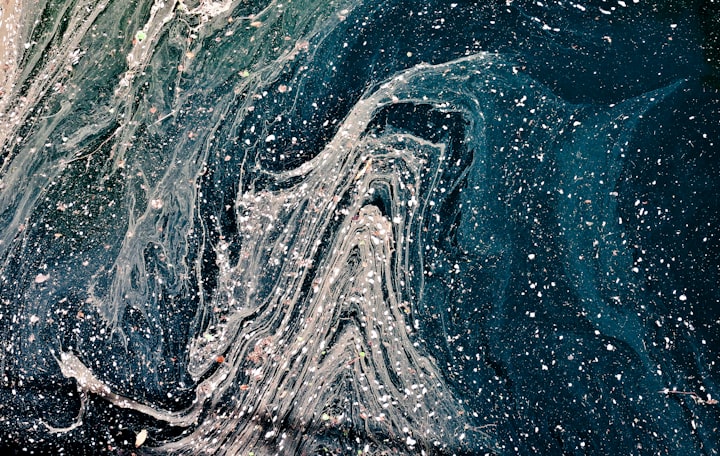10 prehistoric marine animals that look like monsters
The modern ocean is full of barracuda, sharks, Cthulhu also has the possibility of existence

The modern ocean is full of barracudas and sharks, and Cthulhu may also exist, which is obviously a terrifying place. But these deep-sea creatures discovered in recent times have no close connection to the behemoth monsters that once roamed the prehistoric ocean; for example: giant sea lizards, monster sharks or even "super carnivorous whales". In front of these marine creatures, human beings are much smaller.
Here are 10 terrifying prehistoric sea monsters that have always called the ocean their home.
10. Megalodon

The megalodon is probably the most famous sea creature on this list; from a pop culture perspective, it's hard to imagine a megalodon as long as a school bus (the largest D-shaped school bus in the US is 13.7 meters long). In addition, some scientifically minded infotainment shows, such as the Discovery Channel, are particularly fond of these creatures that are often mistaken for monsters in the movies. Although the megalodon and dinosaurs are generally considered to be the same period of life, the megalodon existed between 25 million and 1.5 million years ago, which means that the megalodon appeared at least 40 million years later than the last dinosaur. . Gosh, this also suggests that megalodons probably existed when the first humans appeared.
Until the last ice age in the early Pleistocene, the megalodon swam in the surrounding warm ocean. It may also be that ice age that made them lose their homes and food. But sometimes nature is the one who supplies us.
9. Pliodontosaurus

If Jurassic Park could show an aquarium scene, and the scene mainly features Jurassic period creatures, then 9 out of 10 times, Pliodontosaurus would be there. Although there is debate as to its true length (a small number of scientists believe it was over 15 meters long), most scientists believe it was about one-fifth the length of its body, with a head full of fangs, and it was About 6 meters. Even by small estimates, its mouth is big enough to swallow you whole, so it looks really big.
Scientists have used smaller swimming robots to experiment with Pliodontosaurus paddle fins and found that their paddle fins weren't very fast, but were exceptionally nimble. They can also make short, quick moves like a crocodile, which makes them even more intimidating.
8. terrestrial whale

The terrestrial whale is not a reptile, and despite its similar name and appearance, it is actually a cetacean (it's not even the scariest on this list!) The terrestrial whale is the carnivorous ancestor of modern whales , a full 15 to 26 meters long! Because of its body length and sinuous appearance, the terrestrial whale has been hailed as the whale's closest "relative" to snakes. Just imagine swimming in the ocean with a 24-meter-long crocodile-like snake-like whale. Then you are now imagining a situation where you would never want to bathe in the sea in your life.
There is solid evidence that terrestrial whales do not possess the cognitive or echolocation abilities of modern whales, and are therefore only capable of navigating in two dimensions (without deep diving or surfacing). So this monster whale is dumber than a bunch of prehistoric hammers, and if you dive or struggle to get to dry land, it's probably never going to hunt you down.
7.Giant ancient broad-winged horseshoe crab

Mentioning anything related to the word "broadfin" can be uncomfortable, and the giant ancient horseshoe crab is also inevitable: it is one of the two largest arthropods ever lived, with a shell and a The length of the claw part is amazing, up to more than 2 meters. Just the thought of an ant a few inches (1 inch = 2.54 cm) long and a spider a few feet (1 foot = 0.3 m) wide would scare most people away, so if one day you are caught by any of these When a creature stumbles alive, it makes sense to scream like a little girl.
On the other hand, platyscopids (limulus) were extinct before the dinosaurs and disappeared without a trace in the Permian Triassic extinction event (which wiped out almost 90% of the planet) life), and in a way, only horseshoe crabs survived the event, and horseshoe crabs were better than normal crabs. There's no evidence that all scorpions are venomous, but the structure of their tails is similar to that of modern scorpions, so they may have been venomous.
6. Maui Long

Maui long is named after the Maori god Maui, who is said to have fished the New Zealand island from the bottom of the sea with a hook, so you can already imagine how large this creature was. People measured Maui long's neck to be 15 meters long; this really is the longest neck ratio of all creatures except some sauropods (really, this is the real data). The total length of Maui Long is about 20 meters, and its ridiculously long neck has many vertebrae, which shows that its neck is very flexible. If you can imagine a snake threading through a shell less turtle, then you probably know what Maui long looked like.
Maui long lived in the late Cretaceous period, which meant they needed to jump into the water to avoid their rivals, Velocipede and Tyrannosaurus; which side was worse off is still open. According to current science, Maui long's range of activities is limited to this area of New Zealand, which also shows that New Zealand, which may one day be on par with Australia and other neighboring countries, has always been a terrifying place.
5. Dunn's Fish

Dunn's fish is a carnivorous tank-shaped marine creature about 9 meters long. It has a shorter lifespan than a shark, but I'm sure it's a small consolation to many other creatures. In addition to the teeth, it also resembles a sea turtle, with bony ridges. After calculation, it was found that the bite force of Deng's fish can reach nearly 4 tons per square inch. In this respect, it is on par with crocodiles and Tyrannosaurus rex, and they are the strongest biteers in history. Based on the skeletons associated with the muscular system, it has also been inferred that Dunn's fish can open its mouth in 1/50 of a second, which means it sucks food directly into its guillotine-like mouth.
The flakes that make up the Dunn's "teeth" evolve from hard, rigid jaws as it grows into blades that make it easier for it to grip its prey, which can also improve its ability to bite off the bony plates of other shellfish. s efficiency. In the arms race of prehistoric marine animals, the Dungeness fish can be called a carnivorous super tank.
4. Keroulong

Kerouosaurus is another short-necked ancient dragon , and its body length is still controversial. There is a saying that Keroulong is "only" about 9 meters and the longest teeth in that big mouth can be nearly 28 centimeters. That's why it got its name from Cronus, the cosmic ruler of the ancient Greek Titans.
Do you know where the crocodile lived? If you guessed Australia, then you're serious about these creatures (and guessed right). Their heads are 2.7 meters long. Put a modern human in front of it, and after it swallows it whole, there is still room for half a human in its stomach. Since Creurosaurus' flippers were constructed very similarly to modern sea turtles, it has been speculated that they climbed ashore to lay their eggs. And it is certain that no one will dig their nests and covet their eggs at that time.
3. Helicopter shark

The shark can grow to about 4.5 meters and has a lower jaw made of "spiral teeth" than the average shark. It looks like a collection of circular saws and sharks, and when you combine these top carnivores with power tools, the whole world shudders with fright.
The serrated teeth of the Helicopter sharks indicate that they are definitely carnivores, but there is still debate as to whether their teeth are in the front of the mouth, as in the picture above, but if their teeth are in the back, it means They are not such fierce predators, like jellyfish. But the teeth of the Helicopter sharks are neatly distributed and have a clear division of labor; they survived the Permian-Triassic extinction event, which suggests that they may have been smart enough to build their own "air-raid shelters." Or maybe they only live in the deep sea.
2. Melville's Whale

Remember the "super carnivorous whale" mentioned earlier? That's it. Imagine a combination of a killer whale and a sperm whale. Melville's whales will eat other whales. The teeth it feeds on are some of the largest ever made by an animal (elephant tusks are larger than their teeth, but tusks are only impact in appearance and only help elephants crush food; role), the largest tooth is 0.36 meters long. They live in the same ocean and eat the same food as the megalomania, so they need to compete with the largest shark ever.
Melville's whale has a head of about 3 meters and has an echolocation system like modern toothed whales. These advantages make them more handy for activities on the dark bottom. If there's anything lesser known, it's where its name came from. It is named after Herman Melville, the biblical sea monster leviathan and author of Toby Dick. If Toby-Dick was anything like Melville's, it would have eaten Pequot and everyone on board as snacks.
1. Giant Stingray

What kind of creature can be 5 meters wide, have a 25 cm long stinger on its tail, and be strong enough to pull a boat full of passengers ashore? This should be none other than the giant stingray. A prehistoric giant fish, they still swim in the depths of freshwater and freshwater from the Mekong to northern Australia. Stingrays existed millions of years after the extinction of the dinosaurs, proving the success of their own construction, just like their ancestors, the sharks.
The bodies of giant stingrays use tried-and-true, ancient structures, yet they survived ice ages and even the devastating Toba catastrophe. It was filmed on Animal Planet's River Monsters, and while showrunners tend to exaggerate almost everything, it's extremely dangerous to be around giant stingrays things, even without your knowledge. They are also notorious for piercing human limbs with neurotoxin-laden stingers. But guess on the bright side, if there's a stingray in front of you, at least these prehistoric sea monsters won't try to eat you.
About the Creator
Richard Shurwood
If you wish to succeed, you should use persistence as your good friend, experience as your reference, prudence as your brother and hope as your sentry.






Comments (5)
Well written.
I'm new and trying to get my writing read! Please subscribe!
I hope to share more stories in the future
Great story
Great writing